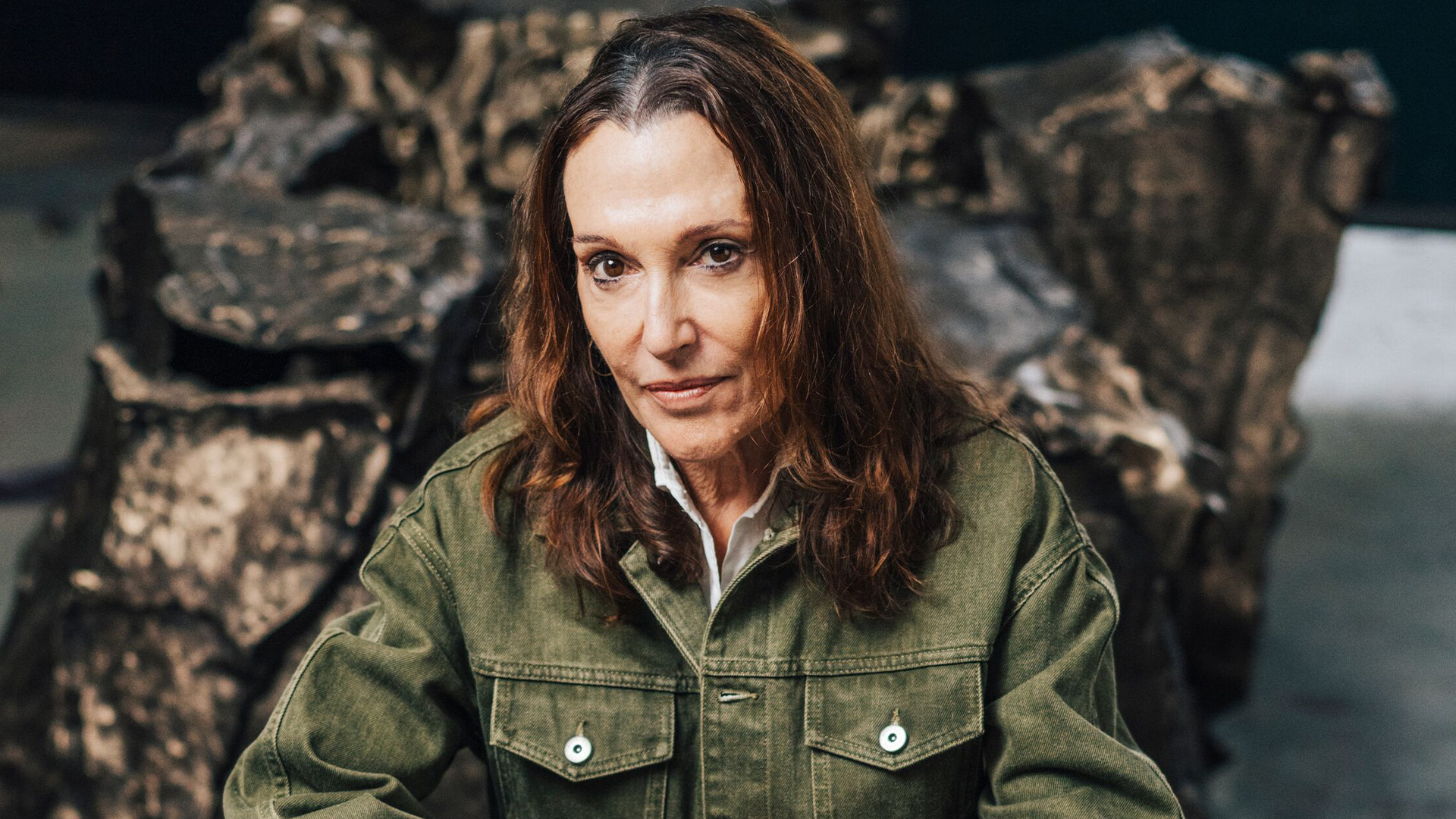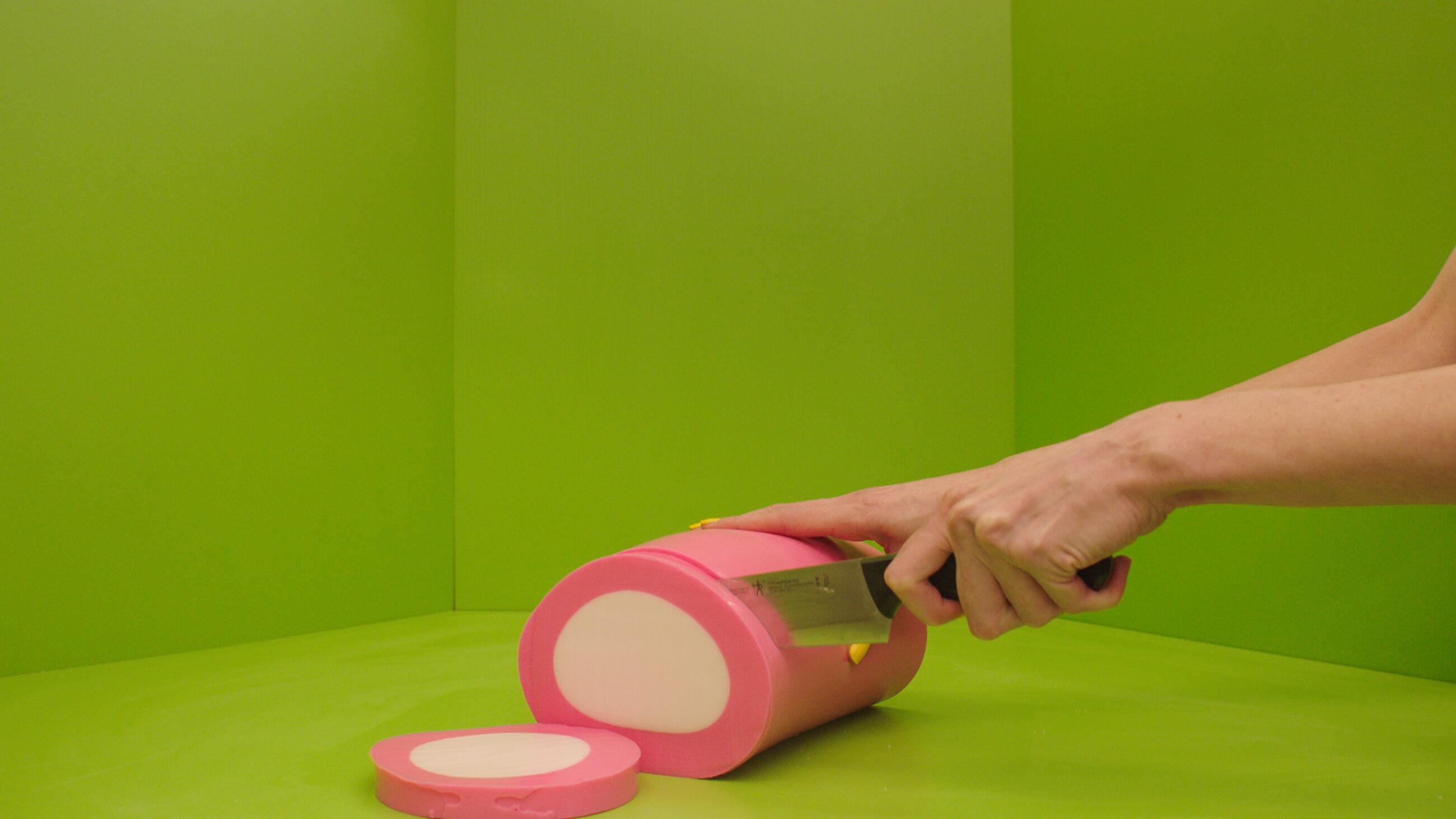Exhibition Learning Notes: ‘Nicolas Party. Clotho’

Nicolas Party at Hoam Museum of Art, 2024 © Nicolas Party. Photo: Woojeong Lee
Exhibition Learning Notes: ‘Nicolas Party. Clotho’
This resource has been produced to accompany the exhibition ‘Nicolas Party. Clotho’ at Hauser & Wirth London from 14 October – 20 December 2025.
About Nicolas Party
Nicolas Party (b. 1980, Lausanne, Switzerland) is internationally recognized for his distinctive use of soft pastel and his transformative approach to familiar genres, such as still life, landscape and portraiture. His works are at once playful and unsettling, blending stylized figuration with abstraction to challenge the traditions of representational painting. Strongly influenced by the landscapes and visual traditions of his native Switzerland, Party’s work is situated within a broader European lineage, while also resonating with contemporary concerns around identity, time and art historical dialogue. Party’s practice extends beyond drawing and painting into murals, ceramics, installation works and sculpture—often referencing fragments from classical antiquity. His androgynous figures and motifs are frequently installed on tromp l’oeil marble plinths and within vividly colored environments, turning the exhibition space into an immersive encounter. These spatial interventions reflect his early background in graffiti and mural painting and are central to how he constructs narrative and mood. He studied at the Lausanne School of Art in Switzerland before completing his MFA at theGlasgow School of Art in Scotland. He currently lives and works in New York NY.
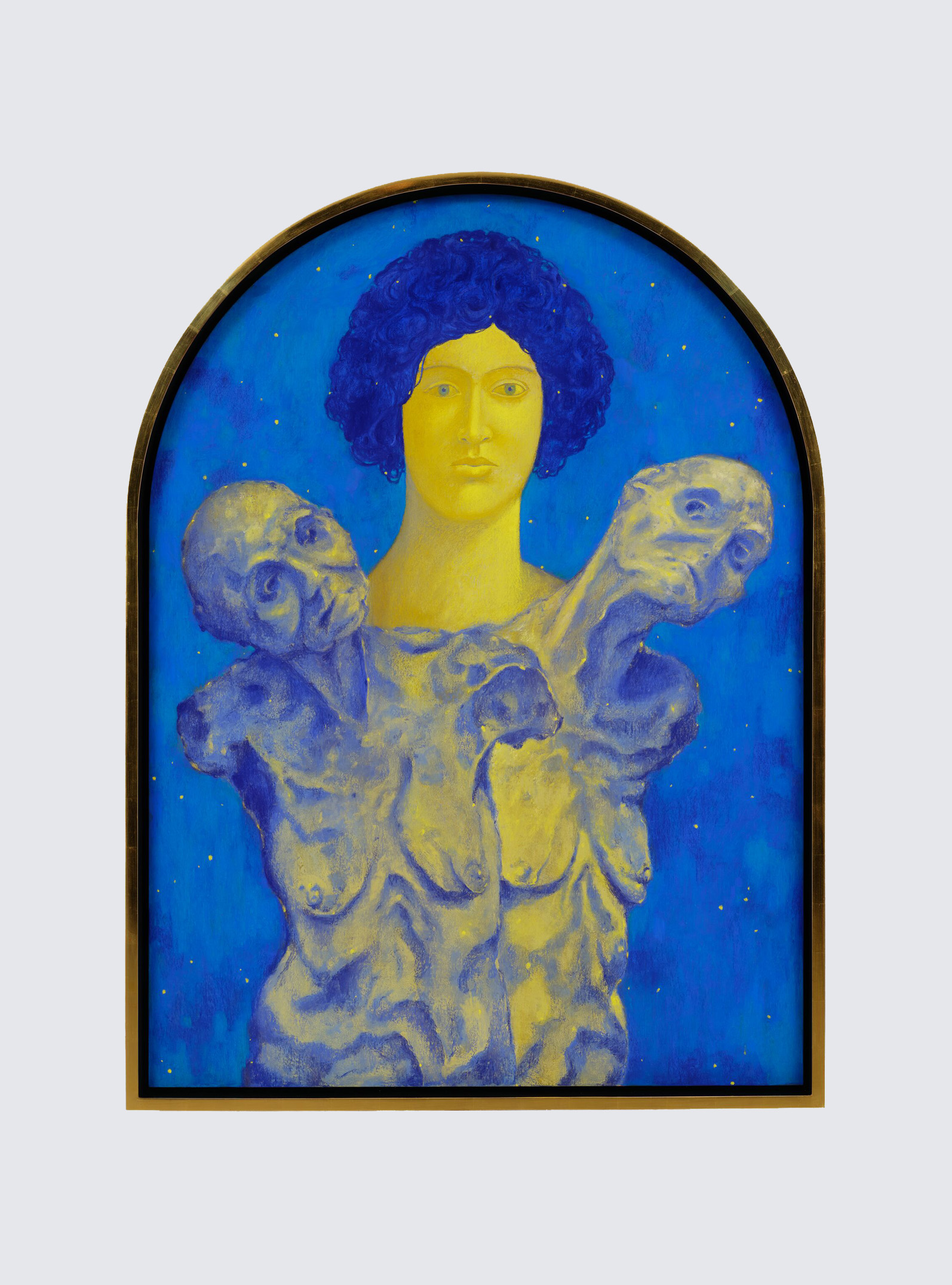
Nicolas Party, Portrait with Camille, 2025. © Nicolas Party. Photo: Thomas Barratt
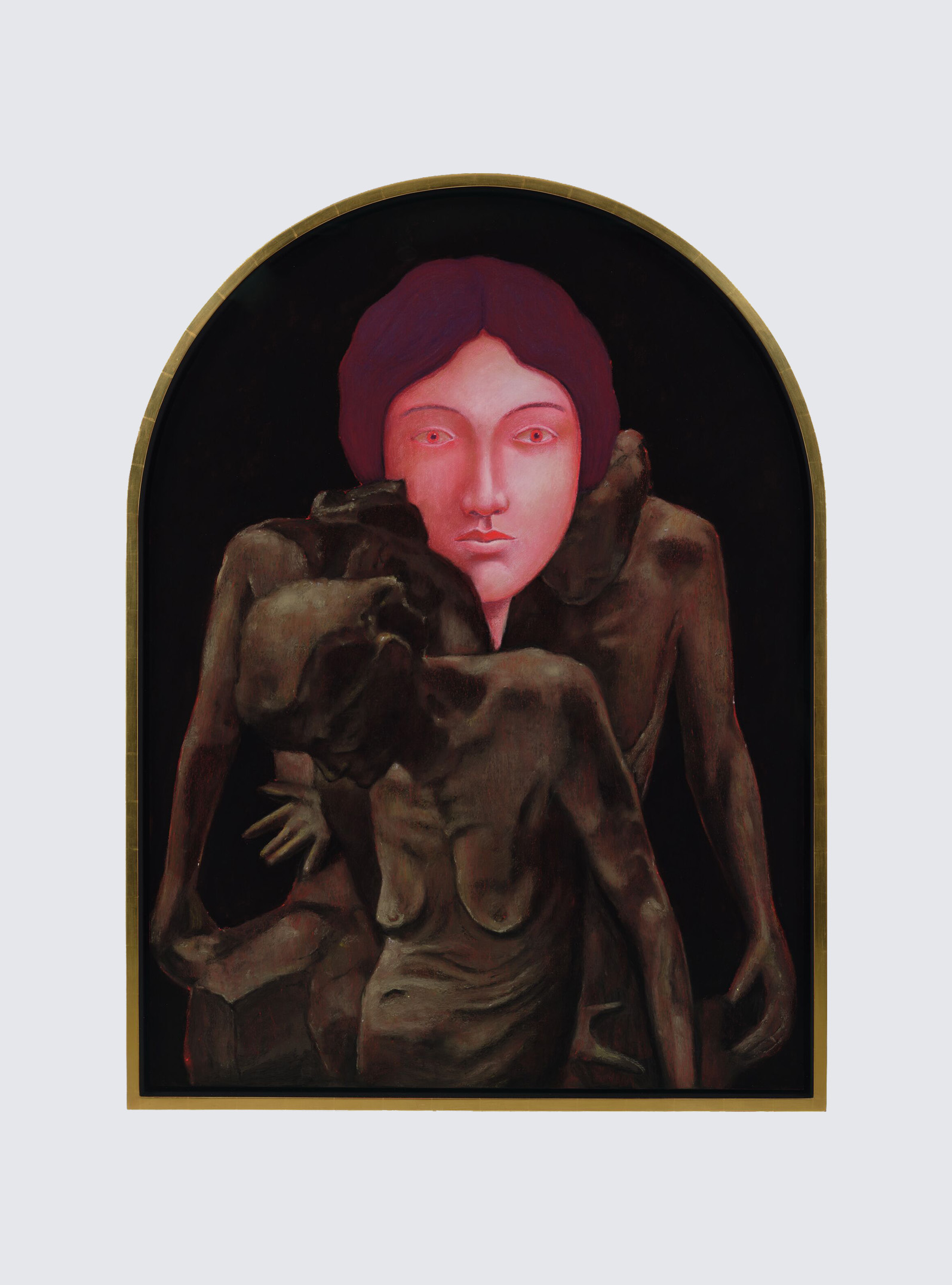
Nicolas Party, Portrait with Auguste, 2025 © Nicolas Party. Photo: Thomas Barratt
What does the exhibition look like?
For this exhibition at Hauser & Wirth London, the walls are painted a bold electric blue, creating a dramatic backdrop that intensifies the color and mood of the pastel works. This rich color also enhances the sense of atmosphere and helps unify the space visually and is typical of Party’s immersive approach, making the exhibition feel like a total environment rather than a traditional display. In addition to the wall color, arched structures have been added throughout the gallery, designed by Party to break up the space, frame certain views and guide how visitors move through the exhibition.
The exhibition is named after ‘Clotho’, a sculpture by Camille Claudel that drew its inspiration from Greco-Roman mythology. Clotho was the youngest of the Three Fates who decided human destiny—her role was to spin the thread of life. Party’s ‘Portrait with Camille’ is based on this work and explores themes of aging, time and mortality. A second portrait, ‘Portrait with Auguste,’ is based on a sculpture by Auguste Rodin. Claudel, a brilliant sculptor in her own right who died in relative obscurity, was Rodin’s assistant and muse—they were closely connected as artists. Together, Party’s two portraits create a conversation between their work and lives. Party’s portraits show calm, still figures. They are youthful and emotionless, contrasting with the aged forms in the sculptures they reference.
The remaining 13 works are treescapes. Each tree scene represents a different time of year—some are full of leaves, others are bare. These works explore cycles of life, change and renewal. One treescape includes a waterfall, suggesting movement and symbolizing the unstoppable flow of time as it cascades through the center of the image. Together, the portraits and landscapes connect themes of stillness and change, youth and age, nature and time.
‘Today, the vast majority of contemporary paintings are shown in spaces that have attempted to be neutral and invisible, making the experience only about the works on display and rarely about the interaction between the two.’—‘Nicolas Party’ (2022), Phaidon Press
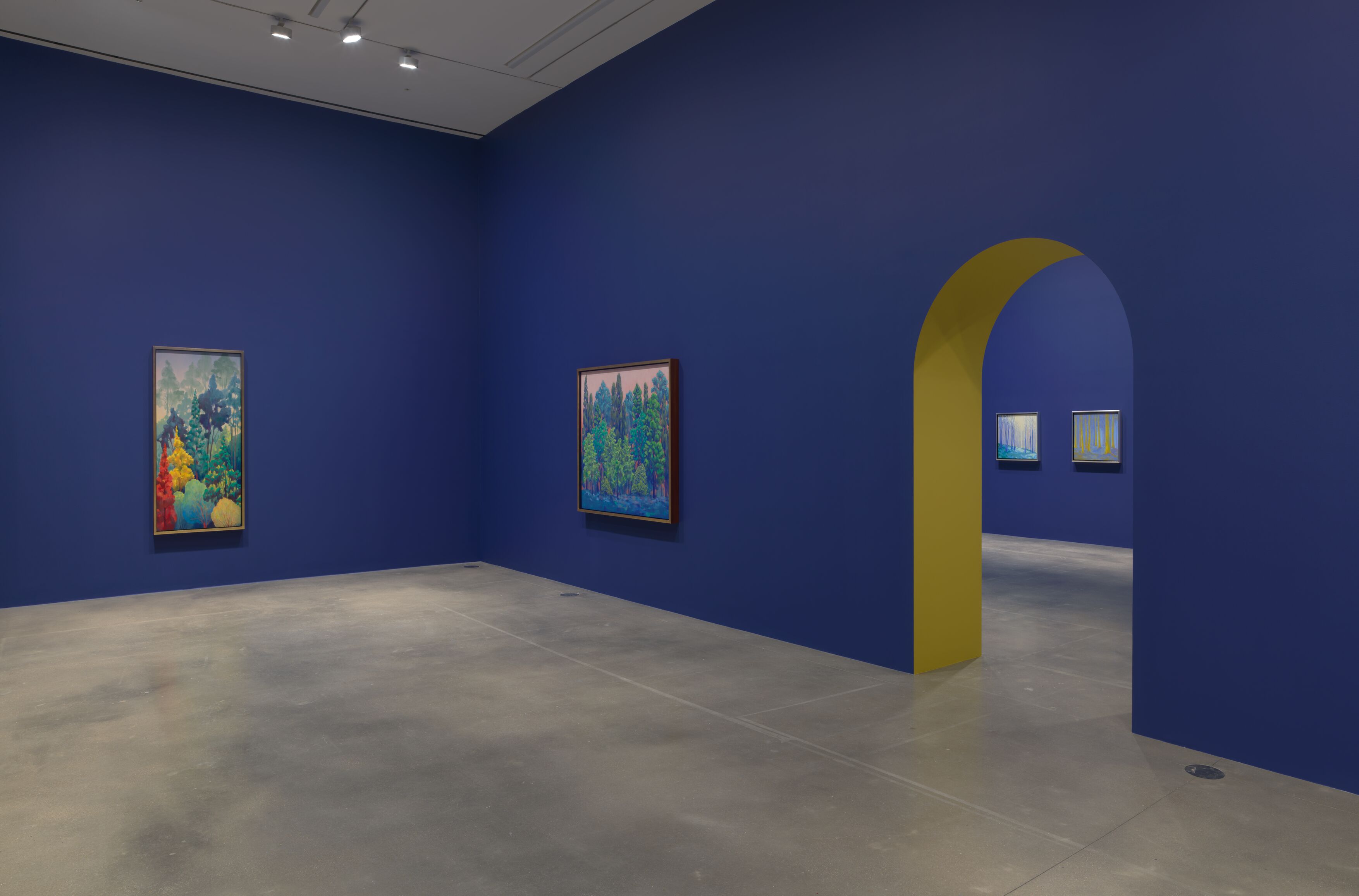
Installation view, ‘Nicolas Party. Clotho,’ Hauser & Wirth London, 2025 © Nicolas Party. Photo: Alex Delfanne
How does he make his work?
Nicolas Party primarily works with soft pastel, a material he has mastered for its intense color andfluid application. An unusual yet deliberate choice in contemporary art, allowing for both intensecolor and painterly fluidity, it gives a strong yet smooth flowing look, helping create dreamlikescenes filled with organic shapes, bold contrasts and figures that feel frozen in time and space.He applies it in layers to build depth and texture, often blending byhand to create smooth, saturated surfaces.His process involves stylising natural forms, like trees, faces and everyday objects, intosimplified, often surreal shapes. Alongside his pastel works, he creates murals, sculptures,ceramics and architectural installations. Color is central to his practice.
What are his sources of subject matter?
Nicolas Party has a fascination with landscape and the natural world, informed by his childhoodin Switzerland and the trajectory of central European landscape painting. He draws subjectmatter from traditional art genres like portraiture, landscape and still life, as well as classicalsculpture and mythology. His work also reflects personal influences, including his early interest ingraffiti and murals. He often references historical artists—points of reference in his work includecelebrated 19th-century Swiss artists Félix Vallotton and Hans Emmenegger.
‘An element that became crucial to my landscapes is the tree. Trees might be the object most frequently painted to represent the natural world, an essential symbol in cultures around the world.’ —‘Nicolas Party’ (2022), Phaidon Press
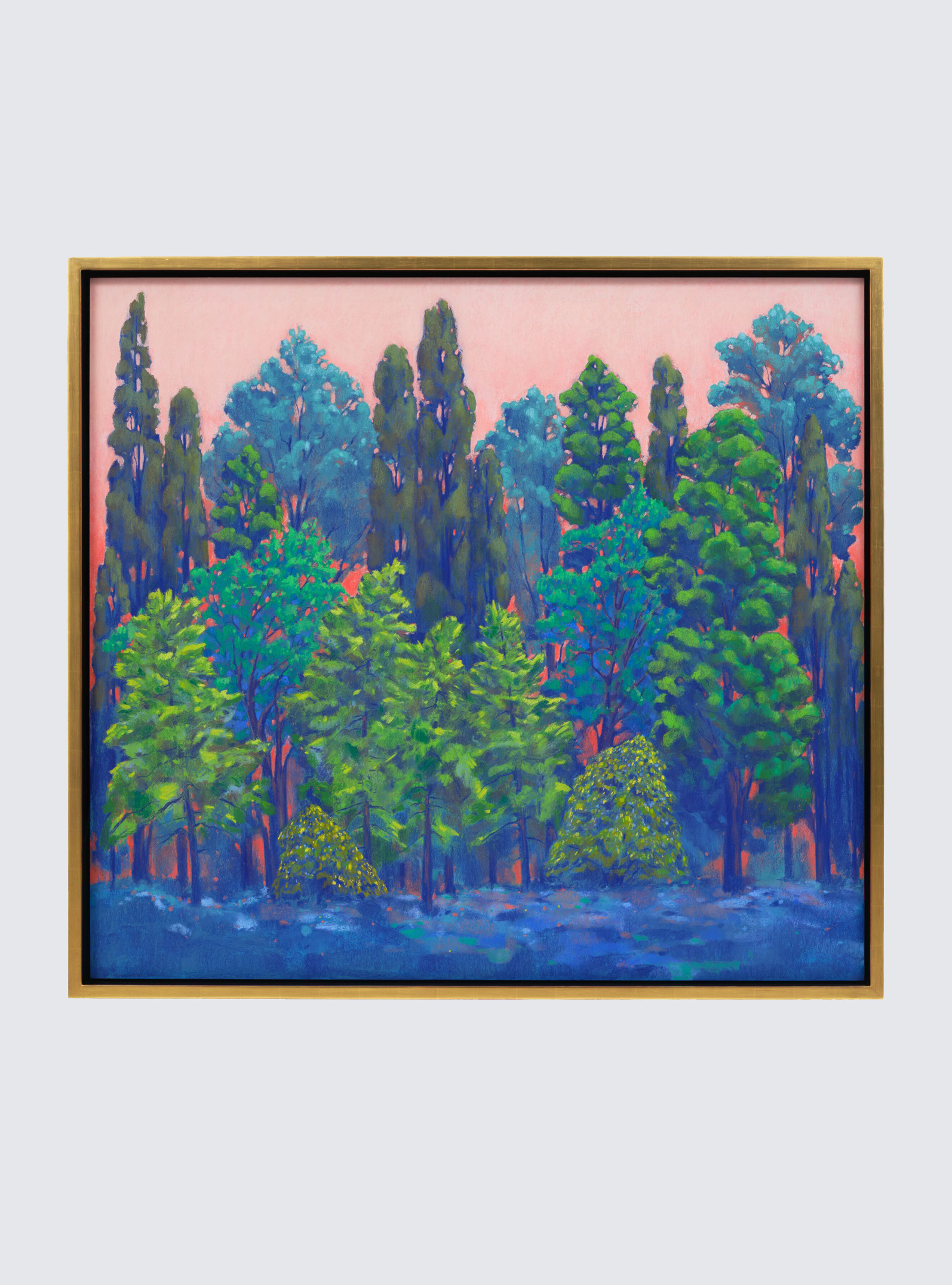
Nicolas Party, Trees, 2025 © Nicolas Party. Photo: Thomas Barratt
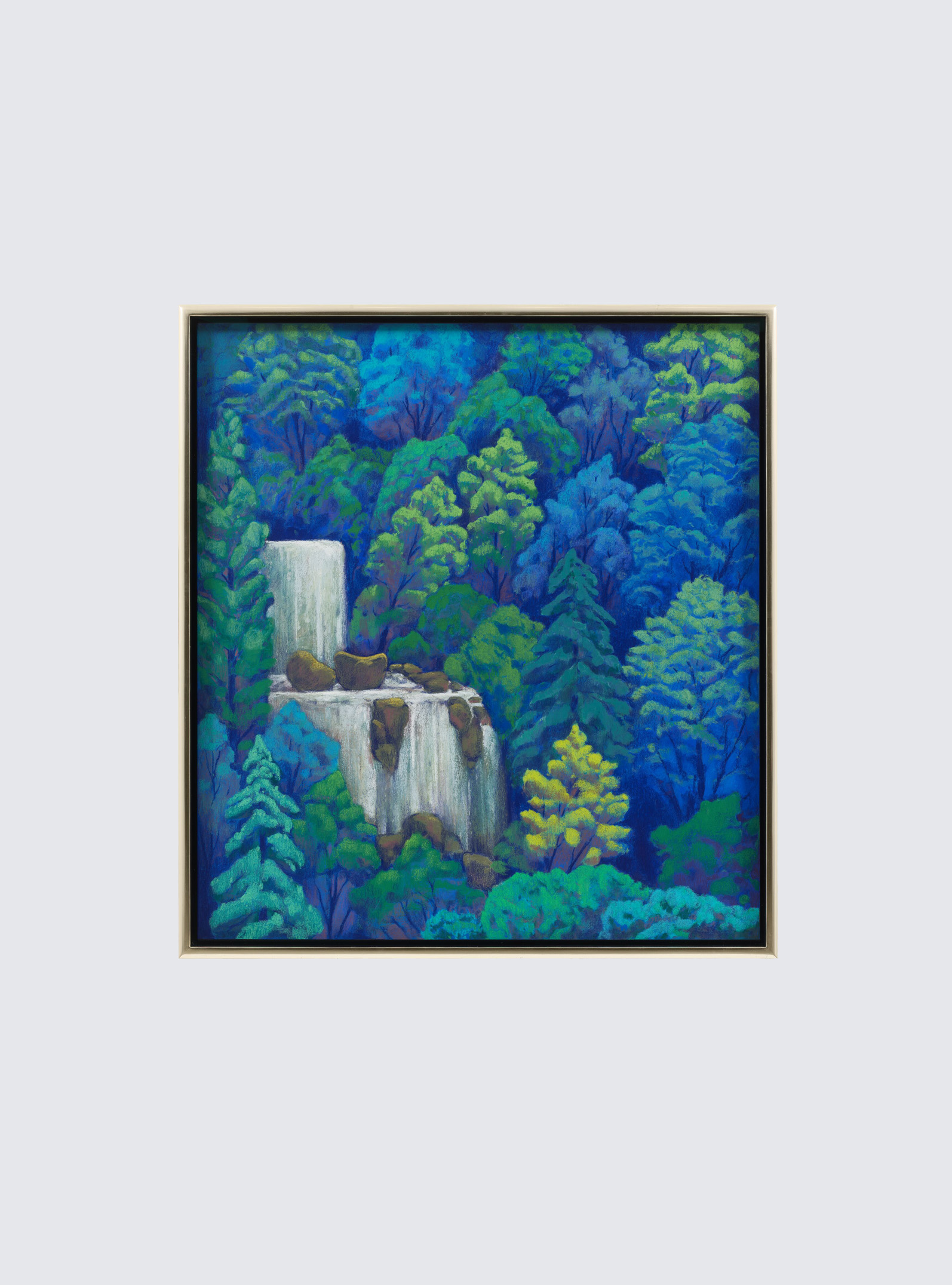
Nicolas Party, Trees, 2024 © Nicolas Party. Photo: Sarah Meuhlbauer
What are the major themes in the exhibition?
Time, aging and mortality
Party’s portraits and sculptures grapple with the passage of time and the inevitability of aging.By referencing classical sculptures and mythological figures, he places his subjects outside of a specific moment in history, evoking both timelessness and mortality. This creates a tension that invites viewers to consider how beauty, life and identity change over time — and how art can freeze or distort these processes.
Cycles of nature, stillness and movement
The exhibition contrasts still, posed, seemingly emotionless portraits with more dynamic elements, like the painted waterfall in the forest scenes. While the static figures feel almost suspended in time, the flowing water suggests constant movement and transformation. Together, they reflect the cycles of nature, from birth and growth to decay — and raise questions about the relationship between human stillness and the unstoppable flow of life.
Myth, symbolism and art historical dialogue
Drawing on Greco-Roman mythology, Party reimagines archetypal characters and landscapes to explore universal themes of fate, transformation and the unknown. His references to historic artists like Camille Claudel and Auguste Rodin build a conversation across time, bridging the past with the present and positioning his own work within a long tradition of artists exploring the human condition.
Immersive environments and sensory experience
Party transforms the gallery into a vivid, enveloping environment, using bold colors and architectural interventions like arches that direct the viewer’s gaze toward specific works. The painted walls intensify the emotional and psychological impact of his works, whereby the gallery becomes both a stage for and an integral part of the exhibition, blurring the line between artwork and setting.
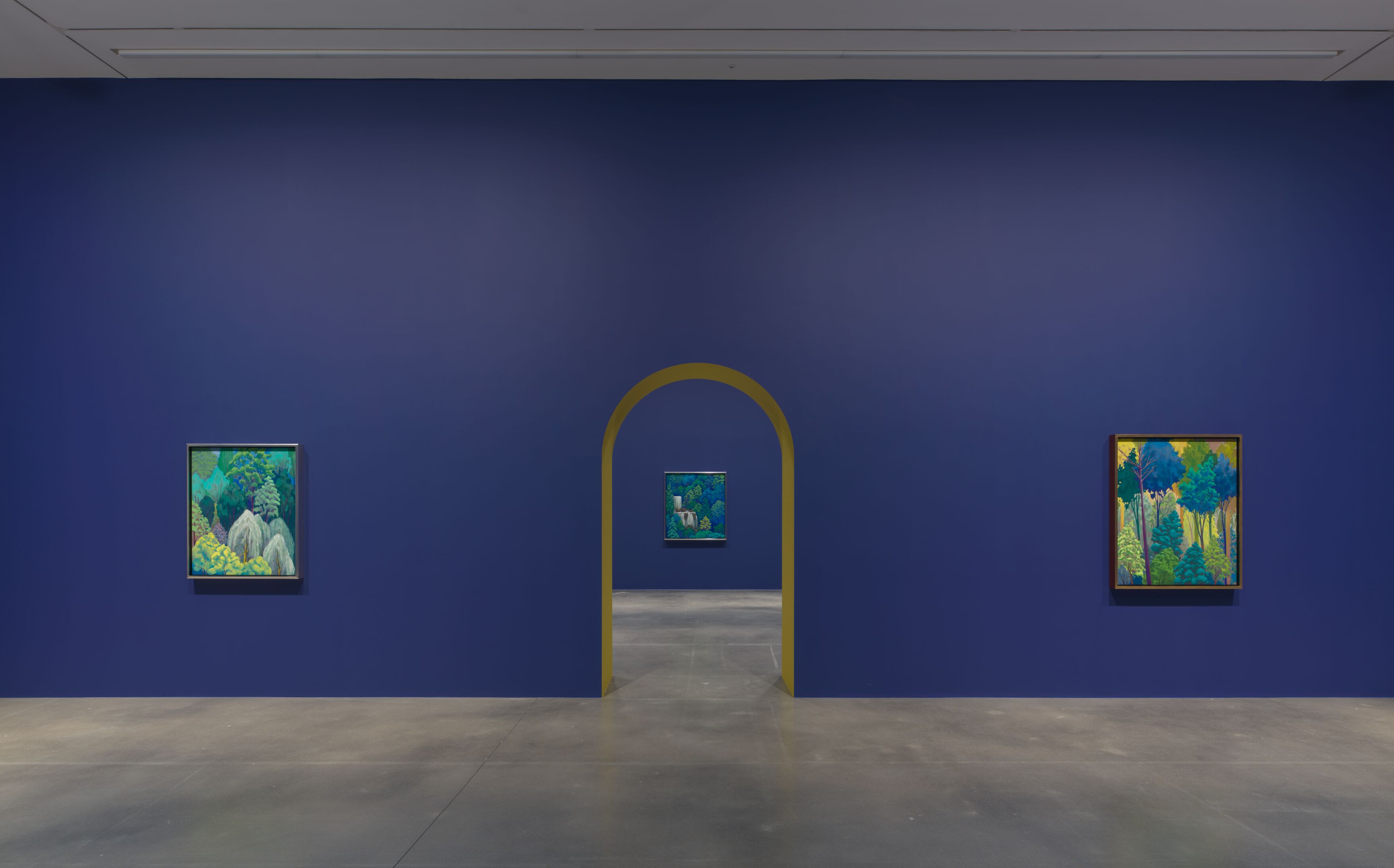
Installation view, ‘Nicolas Party. Clotho,’ Hauser & Wirth London, 2025 © Nicolas Party. Photo: Alex Delfanne
What other artists does his work relate to?
Félix Vallotton (1865 – 1925), a Swiss artist who painted portraits, landscapes and still lifes in an unemotional, realistic style.
Hans Emmenegger (1866 – 1940), whose detailed observations and love of nature are reflected in bold and atmospheric landscapes and still lifes.
Milton Avery (1885 – 1965), was known for colorful, bright, flattened forms and innovative landscape painting.
Other Hauser & Wirth artists to consider
Rashid Johnson (b. 1977) who explores themes of art history and whose symbolic language and architectural interventions mirror Party’s own environmental approach.
Phyllida Barlow (1944 – 2023) who challenged audiences into a new relationship with the sculptural object, the gallery environment and the world beyond with sculptures that stretched the limits of mass, volume and height.
Luchita Hurtado (1920 – 2020) for her deep engagement with nature, the body and spirituality, and whose artistic vocabulary is a coalescence of abstraction, mysticism, corporality and landscape.
Amy Sherald (b. 1973) whose stylized, emotionally complex portraits share Party’s interest in rethinking representation.
Glossary
Architectural intervention
Changes made to a building’s structure or design for artistic effect. Party sometimes paints
walls or adds arches to alter the gallery space as part of the work.
Clotho
In Greek mythology, Clotho is one of The Three Fates. She is responsible for spinning the
thread of life, determining when a person is born.
Mortality
Mortality, or being mortal, refers to the fact that all living things eventually age and die.
Mythology
Traditional stories, often from ancient cultures, often involving supernatural beings,
heroes, or events, that explains a culture’s beliefs or practices.
Pastel
A soft, chalky art material known for both its bright and delicate colors.
Portrait
A representation of a person, usually showing the face.
Representational painting
Art that shows real things, such as people, or trees, in ways we can recognize.
Symbolism
When an object or image is used to represent a deeper idea or feeling, for example a tree
standing in for life, or a waterfall standing in for change.
Treescape
A type of landscape focused on trees.
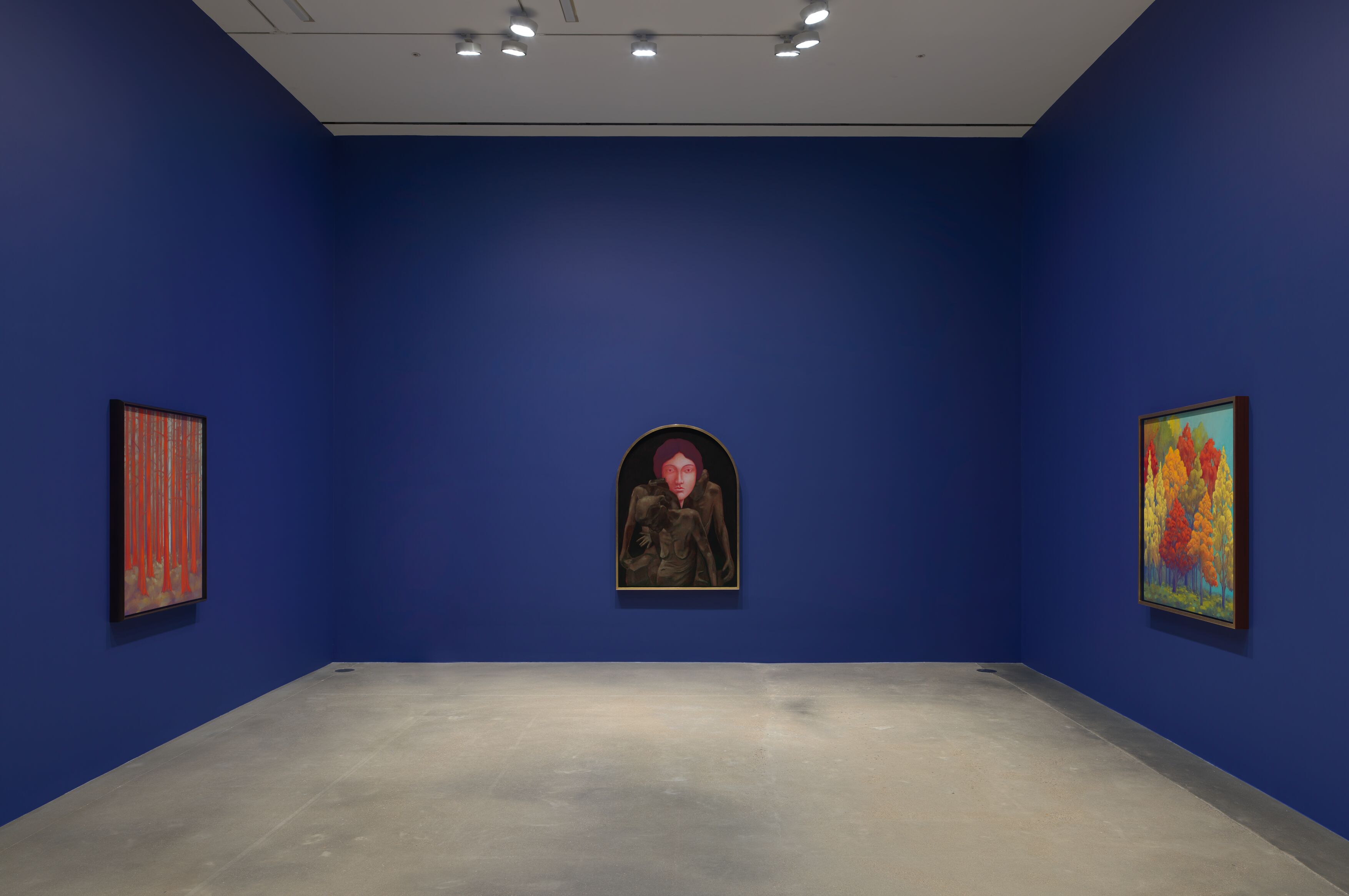
Installation view, ‘Nicolas Party. Clotho,’ Hauser & Wirth London, 2025 © Nicolas Party. Photo: Alex Delfanne
Questions for discussion
In his portraits, Party moves away from realism and individual identity. His figures are youthful, stylized and expressionless, frozen in time. In his landscapes, particularly his pastel treescapes, Party avoids naturalistic detail. The trees are rendered in simplified forms, often with dreamlike colors. How does Nicolas Party challenge traditional portraiture and landscape painting in this exhibition?
The figures in Party’s portraits are full of subtle meaning. They are carefully composed, emotionless and still — almost like statues. He often places these figures in undefined or flat backgrounds, which removes them from a specific time or place. How would you say the artist conveys atmosphere, time or place through his portraits?
Nicolas Party’s use of soft pastel brings a rich, velvety texture to the surface, while the bright, flat colors, like the electric blue gallery walls in his ‘Clotho’ exhibition, create an intense, immersive atmosphere. In what ways does Party create emotional contrasts through colors, form and subject matter, and how do these affect your experience as a viewer?
Supplementary research
Resources
1 / 10


